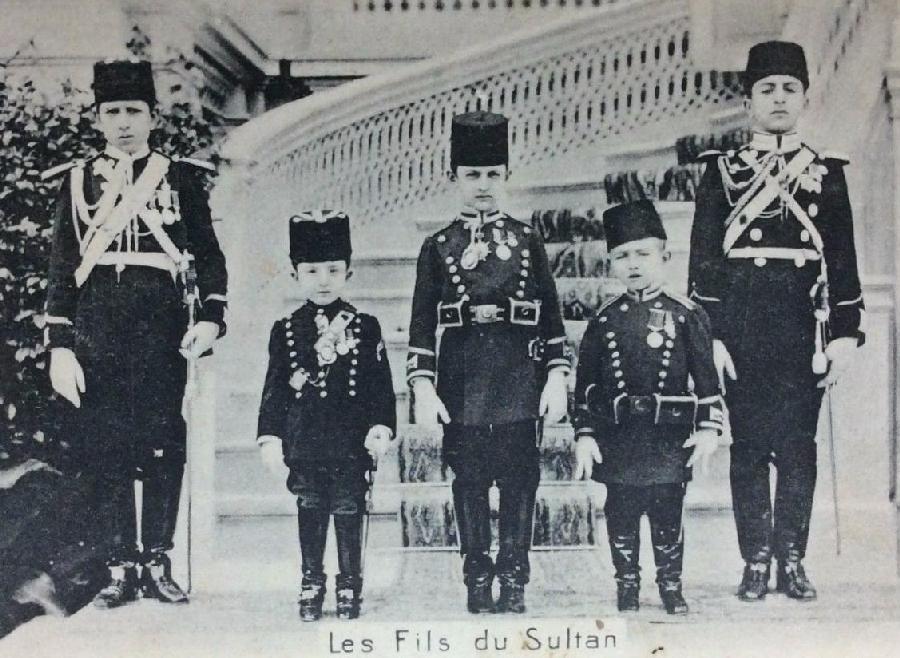

European Royalty: Ottoman Empire -- Sultan Abdul Hamid II (1876-1909)

Figure 1.--Here we see the Ottoman princes, apparently in 1906. Unfortunately they are not identified. We think that Hamid may be their grand father. They may be the children of the Crown Prince. Ottomn royalty is more difficult to follow than Europeam royalty. The Sultan had a harem and under Koramnic law could have more than one wife. And there were also children from the many Harem consorts. The caption, however, does say 'Sons of the Sultan'. It is possible that the postcard portrait was taken in 1909 or later after Hamid was removed.
|
|
The last major Ottoman sultan who exerted autocratic control was Abdul Hamid II. He was the 34th sultan. He was born in 1842 and became sultan in 1876. His reign was the fina; period in which the Empire could have been revivedbut Hamid II failed at this effort. He thus oversaw a period of decline in the power and frontiers of the Empire. He was forced to issue the first Ottoman constitution (December 23, 1876) This was a sign of progressive anti-monarcial thinking that appearrd during the fitst day of his rule. Hamid in the end refused to accept it. He charge that the reformers were closet republicans, corupted by Western thinking and when disagreemebt developed with Parliament, Hamid suspended both the constitution and Parliament (1878), allowing him to rule with absolute authority like all former sultans. He became knowbn as the Red Sultan or Hamid the Damned because of these bloody actions. He also set up a secret police to track diwn dusenters and republicans. Hamid was conservative and a brutal despot, but he attempted some effort of modrenization. There were reforms of the bureaucracy, extending the Rumelia Railway and Anatolia Railway. Construction began on the Baghdad Railway and Hejaz Railway. A census system was developed. Control over the press was systemtized. A modern law school was opened (1898). The most far-reaching of Hmid's reforms were in education. Professional schools were founded. Hamid had closed the University of Istanbul (1881), but reopened it (1900). A network of primary, secondary, and military schools was expanded. German companoes were contracted to develop railway and telegraph services. There was an assassination attempt adding to the ultan's increasing paranoia (1905). Hamid was finally deposed shortly after the 1908 Young Turk Revolution (April 27, 1909). Hamid was removed from power (1909). The people supported the Young Turk avction and the advent of constitutional rule.
Sources
HBRC

Navigate the Boys' Historical Clothing Web Site royal pages:
[Return to the Main Ottoman royalty page]
[Return to the Main royal pages]
[Return to the Main Ottoman page]
[Austria]
[Belgium]
[Denmark]
[France]
[Germany]
[Italy]
[Japan]
[Jordon]
[Luxenburg]
[Monaco]
[Netherlands]
[Norway]
[Romania]
[Russia]
[Spain]
[United Kingdom]
[Yugoslavia]
Created: 1:34 PM 6/17/2017
Last updated: 1:34 PM 6/17/2017




